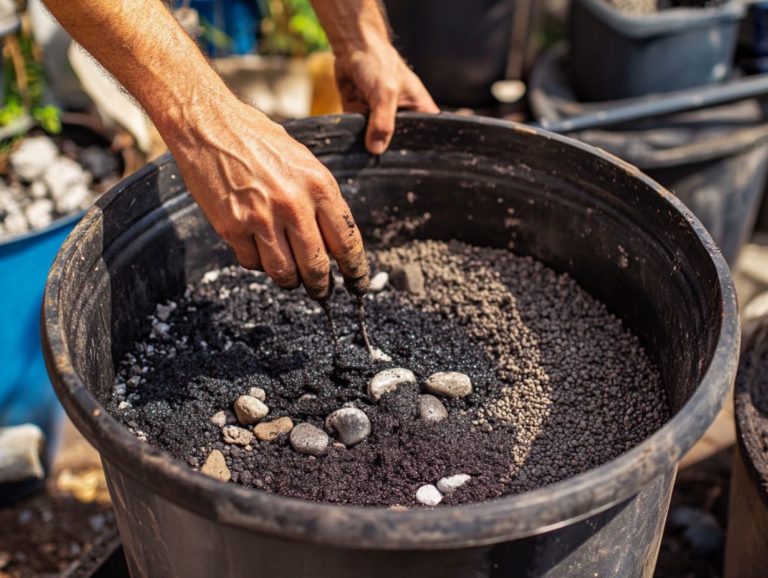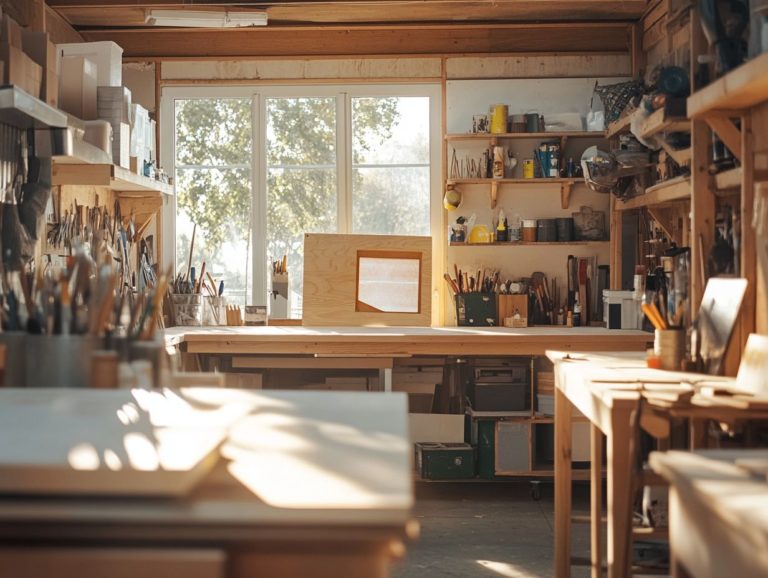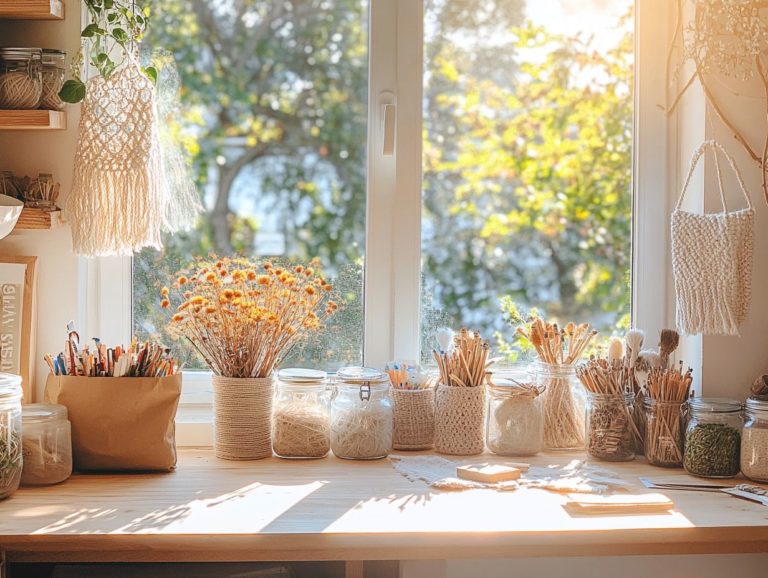5 Essential Tips for DIY Energy Efficiency Projects
Are you aiming to reduce utility bills while enhancing the energy efficiency and eco-friendliness of your home?
This guide presents five essential DIY energy efficiency projects that can truly transform your living space, featuring sustainable features and innovative solutions.
You ll delve into practical steps, starting with a comprehensive home energy audit, upgrading your appliances, and sealing air leaks.
Uncover the myriad benefits of these projects and learn how to harness natural light, smart home technology, and sustainable features for a more energy-efficient home.
Get ready to save money and help the planet!
Contents
- Key Takeaways:
- 1. Conduct a Home Energy Audit
- 2. Sealing Air Leaks
- 3. Upgrade to Energy-Efficient Appliances
- 4. Utilize Natural Light and Heat
- 5. Implement Smart Home Technology
- What Are the Benefits of DIY Energy Efficiency Projects?
- What Are the Most Common Areas for Energy Loss in a Home?
- How Can One Determine the Energy Efficiency of Their Home?
- What Are the Most Effective Ways to Seal Air Leaks?
- What Are the Top Energy-Efficient Appliances to Invest In?
- How Can One Incorporate Natural Light and Heat into Their Home?
- What Are the Top Smart Home Technologies for Energy Efficiency?
- What Are Some Tips for Maximizing Energy Efficiency in Your Home?
- Frequently Asked Questions
- What are the 5 essential tips for DIY energy efficiency projects?
- Why is conducting an energy audit important for DIY energy efficiency projects?
- How do I seal air leaks in my home?
- What are some energy-efficient appliances I can upgrade to?
- Why should I switch to LED light bulbs?
- How important is insulation for energy efficiency?
Key Takeaways:
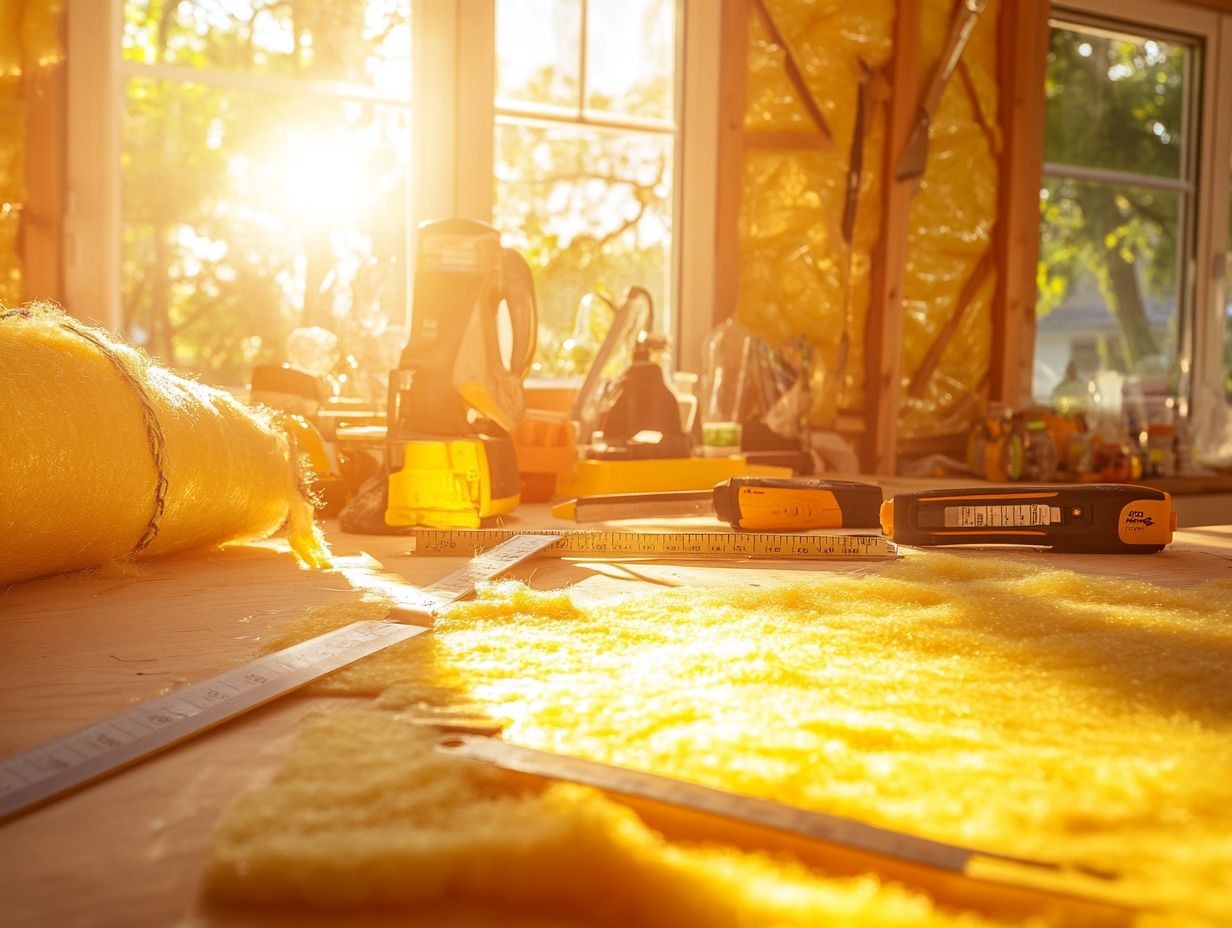
- Start with a home energy audit to find improvement areas.
- Sealing air leaks can significantly reduce energy loss and save you money on utility bills.
- Upgrading to energy-efficient appliances lowers your energy consumption and qualifies you for potential tax credits or rebates.
1. Conduct a Home Energy Audit
A home energy audit is your ticket to discovering how to enhance your home’s energy efficiency, which means lower utility bills and a more comfortable living space.
This comprehensive assessment delves into various elements of your home, including insulation, heating and cooling systems, and appliance efficiency. You can have this audit performed by certified professionals or take the DIY route, leveraging resources like the Home Energy Saver Calculator from the U.S. Department of Energy and the Home Energy Rating Score system.
By embarking on this journey, you stand to unlock substantial savings while making a positive impact on the environment.
This audit begins with a detailed walkthrough of your home, where experts or you will examine insulation quality, check for drafts, and evaluate the performance of your heating and cooling systems.
Spotting energy inefficiencies reveals key areas for improvement, such as sealing windows or upgrading to energy-efficient appliances. You ll receive actionable energy-saving tips from the audit like installing a programmable thermostat or switching to LED lighting that elevate your overall efficiency.
Ultimately, these enhancements lead to lower energy bills and boost your home’s overall value and comfort, making it a savvy investment for any discerning homeowner. Charles Roberts from Kuhn Riddle Architects says, investing in energy efficiency is a smart move for long-term savings and sustainability.
2. Sealing Air Leaks
Sealing air leaks in your home is an essential step toward enhancing energy efficiency. Sealing air leaks prevents heat loss during the winter months and ensures that your living spaces remain comfortable year-round.
By employing effective sealing methods, you can create a more consistent indoor climate while significantly trimming down your heating costs. There are various techniques at your disposal, with weather stripping and draft sealing being among the most favored.
Weather stripping is particularly effective for addressing gaps around doors and windows, while draft sealing takes care of those sneaky leak points, like electrical outlets and plumbing fixtures. Elizabeth Mendenhall from the National Association of Realtors highlights the value of these techniques in home improvement.
To maximize insulation efficiency, it s crucial to identify common problem areas. A quick inspection on a windy day or using the smoke from a candle can help you pinpoint those elusive drafts. Start sealing air leaks today to enjoy a cozier home this winter!
Taking these proactive measures will enhance your comfort and lead to substantial energy savings. Organizations like the Alliance to Save Energy and Long Home Products offer valuable resources for identifying and addressing these issues.
3. Upgrade to Energy-Efficient Appliances
Upgrading to energy-efficient appliances is a savvy investment for anyone eager to cut utility bills and lessen their environmental impact. These appliances consume less energy and frequently come with the esteemed ENERGY STAR certification endorsed by the EPA.
By opting for these products, you elevate your home s overall performance while reaping significant savings over time on heating and cooling expenses. ENERGY STAR-rated refrigerators and washing machines can utilize up to 50% less energy than their traditional counterparts, resulting in hundreds of dollars saved annually. Renowned advocate for sustainable living, Max Vakhtbovych, supports these energy-efficient upgrades.
When selecting appliances, consider aspects like size, efficiency ratings, and compatibility with your existing systems to ensure they align with your specific home improvement objectives.
Choosing energy-efficient options leads to financial savings and fosters a more sustainable lifestyle. The National Association of Realtors, through insights from Elizabeth Mendenhall, highlights the growing market preference for homes with sustainable features.
4. Utilize Natural Light and Heat
Utilizing natural light and heat is an effective strategy for enhancing energy efficiency in your home. This approach allows you to reduce reliance on artificial lighting and heating systems while fostering a sustainable living environment. Smart landscaping techniques, such as those suggested by Mesh Design Projects, can also play a crucial role in optimizing your home’s energy use.
You have the power to make informed design choices that amplify these benefits. For example, when you install low-emissivity windows, you can invite an abundance of sunlight into your indoor spaces while minimizing heat loss during the cooler months.
Imagine enjoying cool shade in summer while keeping your home warm in winter! By using strategic landscaping techniques, such as positioning trees and shrubs, you can achieve an ideal balance.
Integrating solar panels further elevates this eco-friendly approach, enabling you to harness renewable energy and significantly cut down on utility costs. Dominion Energy and Rocky Mountain Power provide excellent programs to support solar panel installations.
Collectively, these intelligent practices not only contribute to a more comfortable living environment but also substantially enhance your home’s energy efficiency, leaving a lasting positive impact on both the environment and your wallet.
5. Implement Smart Home Technology
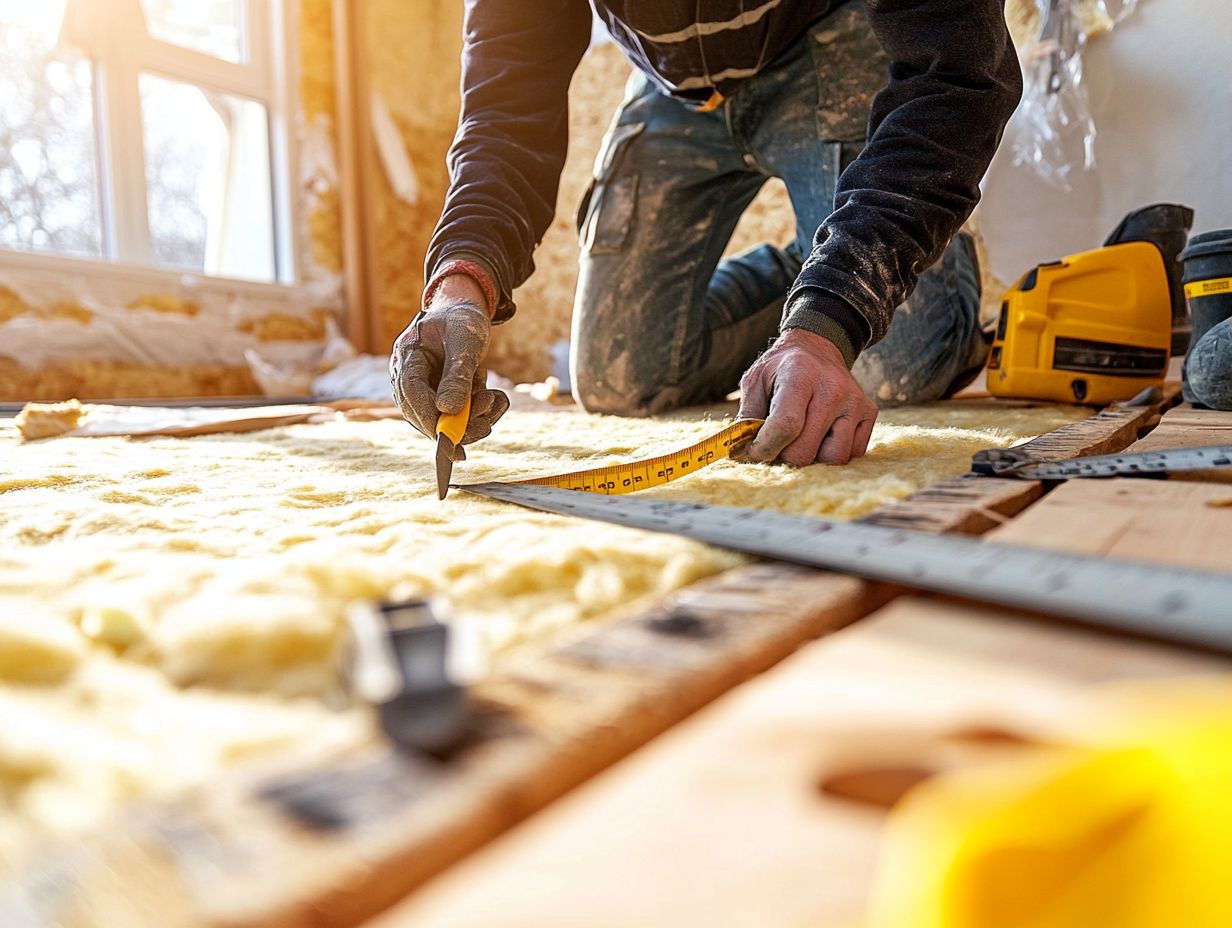
Implementing smart home technology, such as programmable thermostats and smart irrigation systems, can significantly elevate your energy efficiency while championing water conservation. Architectural pioneer Louis Kahn emphasized the importance of integrating modern technology to achieve sustainable living.
These advancements enable you to manage your energy and water usage with remarkable precision. You can tailor settings to your personal needs and schedules. For example, smart lighting solutions can automatically adjust brightness based on the levels of natural light, effectively minimizing electricity consumption throughout the day. Charles Roberts of Kuhn Riddle Architects illustrates how smart landscaping and automated systems can transform home energy management.
Automated HVAC systems learn when you’re home and optimize heating and cooling, ensuring your comfort while reducing energy waste. By embracing these innovations, you not only stand to reduce your utility bills but also contribute to a more sustainable lifestyle, making a positive impact on the environment.
Start upgrading your appliances today and watch your savings grow!
What Are the Benefits of DIY Energy Efficiency Projects?
Ready to cut your bills and make your home cozier? Embarking on DIY energy efficiency projects presents a wealth of advantages for you as a homeowner. Not only can you lower your utility bills and heating costs, but you also gain a deeper understanding of your home s energy requirements while promoting sustainable living practices. Charles Roberts and BusinessWest have documented numerous success stories of homeowners benefiting from such initiatives.
By getting involved in these projects, you can enjoy the dual benefits of saving money and enhancing the overall comfort of your living space. For example, applying insulating film to your windows or crafting budget-friendly draft stoppers can deliver instant relief from those pesky chilly drafts, creating a much cozier atmosphere.
You should enhance your home s insulation to tackle these challenges. Taking on DIY tasks like sealing gaps and cracks or installing a programmable thermostat can lead to substantial energy savings over time. The Energy Efficiency for Homes initiative offers extensive guidance and tools for such projects.
Countless resources are at your fingertips, from online tutorials to local workshops, enabling you to take charge of your energy consumption. Plus, there s a unique satisfaction that comes from making tangible improvements to your property while contributing to a greener future.
What Are the Most Common Areas for Energy Loss in a Home?
Common culprits of energy loss in your home include poorly insulated attics, drafty windows and doors, and unsealed ductwork. Each of these factors can lead to considerable heat loss and a noticeable spike in your energy costs. Louis Kahn’s architectural principles often underline the importance of addressing such inefficiencies.
Up to 25% of heat can escape through poorly insulated attics, underscoring the necessity for you to evaluate your insulation levels. Drafts from windows and doors, particularly in older models, can let in unwanted air, contributing to yet another significant portion of energy waste. Unsealed ductwork can be even more problematic, with estimates suggesting that up to 30% of conditioned air is lost before it ever reaches your living spaces, compounding the issue.
To tackle these challenges, consider adding weather stripping, upgrading to energy-efficient windows, and employing thorough draft sealing techniques. These improvements can dramatically boost your home s energy efficiency, ultimately leading to a welcome reduction in those pesky utility bills. Companies like Long Home Products and organizations like the Alliance to Save Energy offer excellent resources for those upgrades.
How Can One Determine the Energy Efficiency of Their Home?
Determining the energy efficiency of your home can be achieved through a combination of professional energy audits and tools like the Home Energy Rating Score from the U.S. Department of Energy. These methods not only help you identify areas where energy is being wasted but also reveal opportunities for improvement. Rocky Mountain Power and Dominion Energy provide valuable insights and services for doing detailed energy checks.
You can begin with an energy audit, which involves checks to see how much energy your home uses and where it’s wasted. If you prefer a more accessible approach, online calculators allow you to input your data and receive immediate insights. Resources like the Home Energy Saver Calculator from the U.S. Department of Energy can guide you through this process.
Understanding energy ratings is essential, as these metrics provide a benchmark for efficiency and highlight the most impactful changes you can make to reduce consumption. This knowledge will ultimately guide you toward making smart upgrades that align with both your budget and your environmental aspirations.
Take control of your energy usage now and enjoy a more comfortable, cost-efficient home!
What Are the Most Effective Ways to Seal Air Leaks?
You can effectively seal air leaks using methods such as draft sealing, installing weather stripping around doors and windows, and ensuring proper insulation in attics and crawl spaces.
Applying caulk to gaps and cracks in walls and foundations is essential. Additionally, door sweeps can effectively block drafts at the bottom of doors.
It s vital to pay attention to commonly overlooked areas, including electrical outlets, plumbing penetrations, and baseboards. These locations can significantly contribute to energy loss.
By addressing these leaks, you ll enhance your energy efficiency, leading to lower utility bills and a more comfortable living environment. When done properly, these sealing techniques improve the overall efficiency of your heating and cooling systems and create healthier indoor air quality by reducing humidity and pollutants.
What Are the Top Energy-Efficient Appliances to Invest In?

Looking to save money and help the environment? Investing in top-tier energy-efficient appliances, like ENERGY STAR-rated refrigerators, washing machines, and dishwashers, is your answer. They can lead to substantial long-term savings on your utility bills while significantly enhancing the comfort of your home.
When you upgrade to modern alternatives, you’ll likely notice a remarkable decrease in energy consumption compared to standard models. For example, ENERGY STAR-rated refrigerators use about 15% less energy, while washing machines can save roughly 25% more power with each cycle.
Dishwashers are part of the equation too; efficient models can consume up to 12% less water and energy than their traditional counterparts. Embracing these upgrades fosters a more sustainable lifestyle and contributes to lower greenhouse gas emissions, creating a win-win scenario for both your budget and your environmental consciousness.
How Can One Incorporate Natural Light and Heat into Their Home?
Incorporating natural light and warmth into your home is within your reach by installing energy-efficient windows, utilizing smart landscaping techniques, and ensuring that your insulation is tailored for optimal sunlight exposure.
When you combine these strategies effectively, you can significantly elevate the ambiance and comfort of your living spaces. For example, consider strategically placing larger windows on the south-facing side of your house to invite an abundance of sunlight throughout the day.
Reflective surfaces, like mirrors and bright paint colors, can amplify this effect, brilliantly illuminating even the darkest corners. Thoughtful structural design that prioritizes open floor plans fosters a seamless flow of light through various areas of your home.
By paying attention to these elements, you not only enhance your lighting but also improve energy efficiency, resulting in lower utility bills and a more sustainable living environment.
What Are the Top Smart Home Technologies for Energy Efficiency?
Some of the premier smart home technologies for enhancing energy efficiency include programmable thermostats, smart lighting systems, and automated water conservation devices. These devices automatically adjust your home’s temperature based on your schedule, all designed to manage energy use with remarkable intelligence.
These cutting-edge solutions optimize your energy consumption and grant you greater control over your living environment. For instance, programmable thermostats can adapt to your schedule, adjusting heating and cooling based on occupancy to ensure your comfort without the needless waste of energy.
Smart lighting systems allow for seamless remote control and automation, letting you turn off lights when they re not needed or set schedules that sync flawlessly with your daily routine. Automated water conservation devices keep a watchful eye on usage and detect leaks, fostering responsible water management in your home.
Start optimizing your home today and watch your bills drop! By integrating these advanced technologies, you re not just shrinking your environmental footprint; you re also enjoying significant savings on your utility bills all while embracing a more convenient and efficient lifestyle.
What Are Some Tips for Maximizing Energy Efficiency in Your Home?
Maximizing energy efficiency in your home can involve several smart strategies, such as embracing LED lighting and installing solar panels.
Implement effective water conservation practices to complement your existing improvements. By incorporating these methods, you not only reduce your carbon footprint which refers to the total greenhouse gases emitted by your activities but also enjoy savings on your utility bills.
Seal leaks around your windows and doors to keep your comfortable air inside! Insulating your walls and attic will improve temperature control and create a more comfortable living space.
Consider investing in programmable thermostats, which allow for automatic adjustments based on your daily routine to optimize energy use effortlessly. Even small changes like unplugging devices when they’re not in use or opting for energy-efficient appliances can lead to a significant reduction in overall energy consumption over time.
By adopting these practices, you ll cultivate a sustainable living environment that benefits both your finances and the planet. Start these simple energy-saving steps today!

Frequently Asked Questions
Here are some common questions about DIY energy efficiency projects that can help you get started:
-
What are the 5 essential tips for DIY energy efficiency projects?
- Conduct an energy audit.
- Seal air leaks.
- Upgrade to energy-efficient appliances.
- Use LED light bulbs.
- Insulate your home.
-
Why is conducting an energy audit important for DIY energy efficiency projects?
-
How do I seal air leaks in my home?
-
What are some energy-efficient appliances I can upgrade to?
-
Why should I switch to LED light bulbs?
-
How important is insulation for energy efficiency?
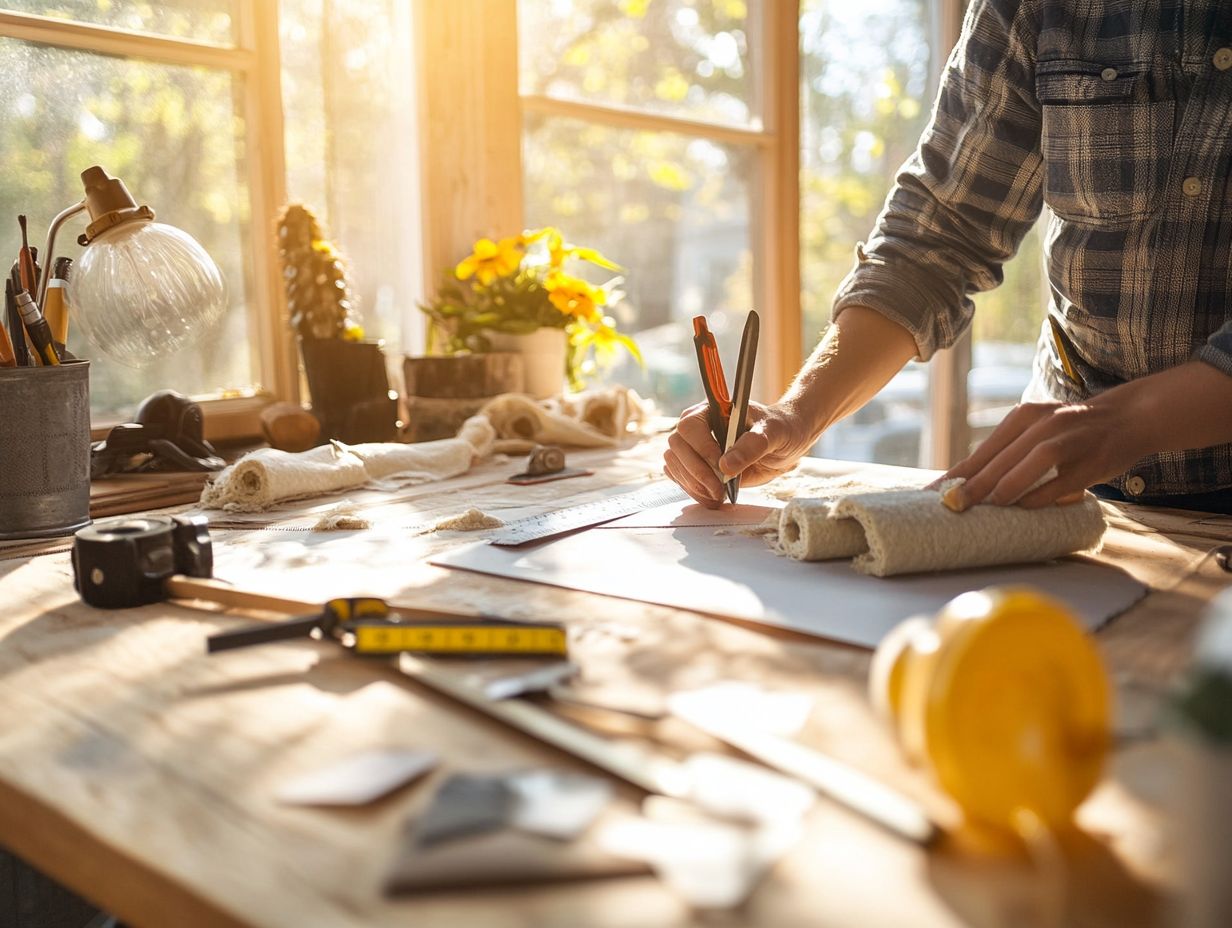
The 5 essential tips are:
An energy audit helps you understand how much energy your home is using and where it is being wasted. This information can guide your DIY energy efficiency projects and help you prioritize which areas to focus on first.
To seal air leaks, use caulk or weather stripping to close gaps around doors and windows. Expanding foam can seal larger gaps and cracks. Don t forget to check your attic and basement for leaks as well.
Energy-efficient appliances use less energy than standard ones, helping you save on your energy bills. Examples include Energy Star rated refrigerators, washing machines, and dishwashers.
LED light bulbs use significantly less energy than traditional incandescent bulbs and can last up to 25 times longer, making them a cost-effective and energy-saving choice for your projects.
Insulation helps keep your home at a comfortable temperature by preventing heat from escaping in the winter and entering in the summer. This reduces strain on your heating and cooling systems, resulting in lower energy bills.

